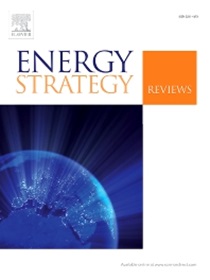Did digitalization of manufacturing industry improved the carbon emission efficiency of exports: Evidence from China
IF 7.9
2区 工程技术
Q1 ENERGY & FUELS
引用次数: 0
Abstract
Improving energy efficiency and reducing carbon emissions are currently global goals pursued by countries worldwide. The Chinese government has also committed to peaking carbon dioxide emissions by 2030. As a developing country with the highest export volume of goods in the world, it is crucial for China to utilize digital technology to reduce carbon emissions in its export sector. Our study utilized spatial econometric methods to examine the impact of digitalization in manufacturing on export carbon emission efficiency in various provinces of China from 2003 to 2020. The results of our research indicate that digitalization in manufacturing has significantly improved the efficiency of export carbon emissions in these provinces. However, the spatial spillover effects were found to be insignificant. This impact was more pronounced in provinces with higher levels of economic development, human capital, and infrastructure construction. The digitalization of the manufacturing industry primarily enhances export carbon emission efficiency through total factor productivity, upgrading of industrial structure, and improvement of export product quality. This paper provides research ideas and policy recommendations for utilizing the digital development of manufacturing to promote the improvement of export carbon emission efficiency.
求助全文
约1分钟内获得全文
求助全文
来源期刊

Energy Strategy Reviews
Energy-Energy (miscellaneous)
CiteScore
12.80
自引率
4.90%
发文量
167
审稿时长
40 weeks
期刊介绍:
Energy Strategy Reviews is a gold open access journal that provides authoritative content on strategic decision-making and vision-sharing related to society''s energy needs.
Energy Strategy Reviews publishes:
• Analyses
• Methodologies
• Case Studies
• Reviews
And by invitation:
• Report Reviews
• Viewpoints
 求助内容:
求助内容: 应助结果提醒方式:
应助结果提醒方式:


